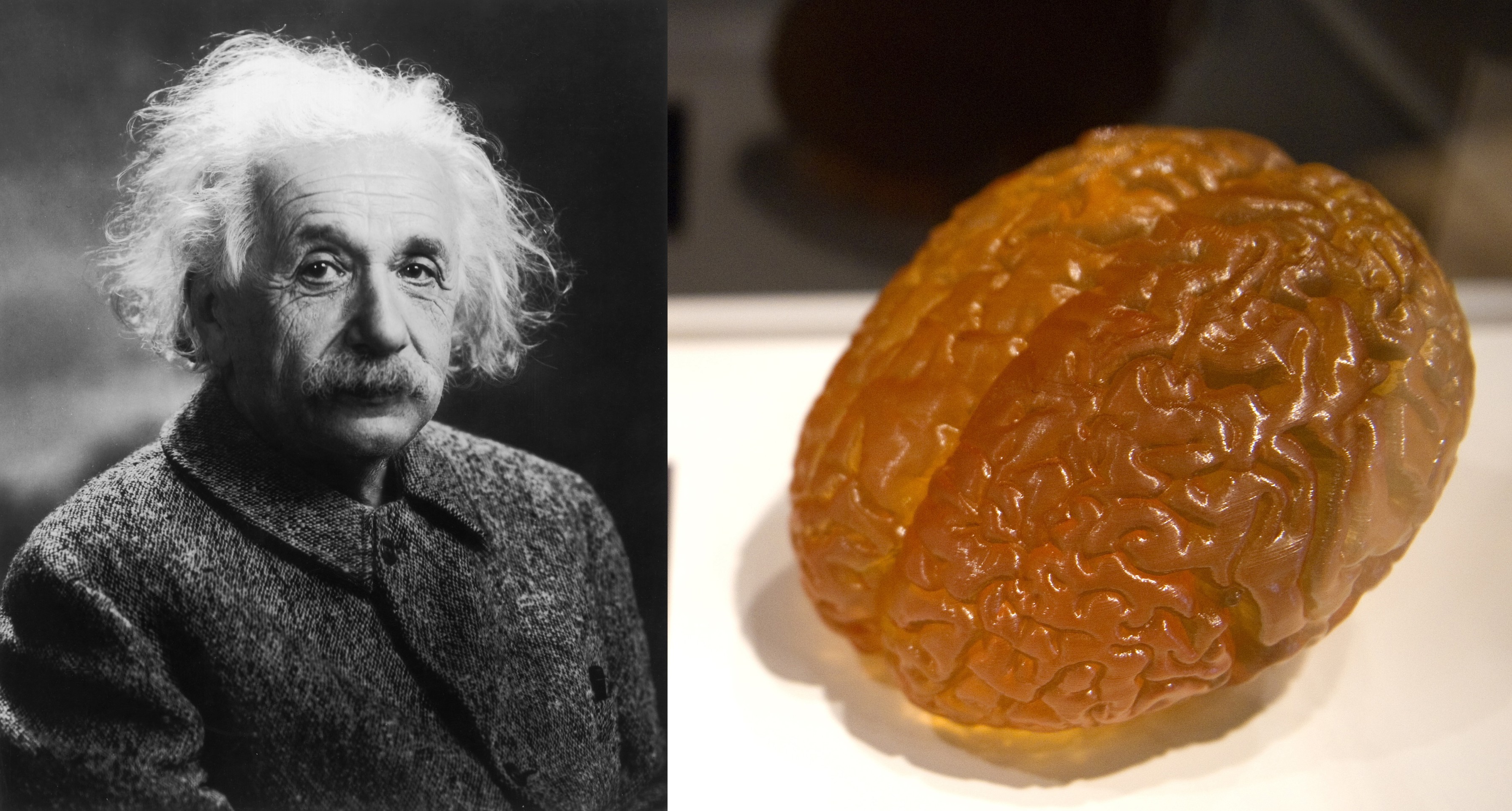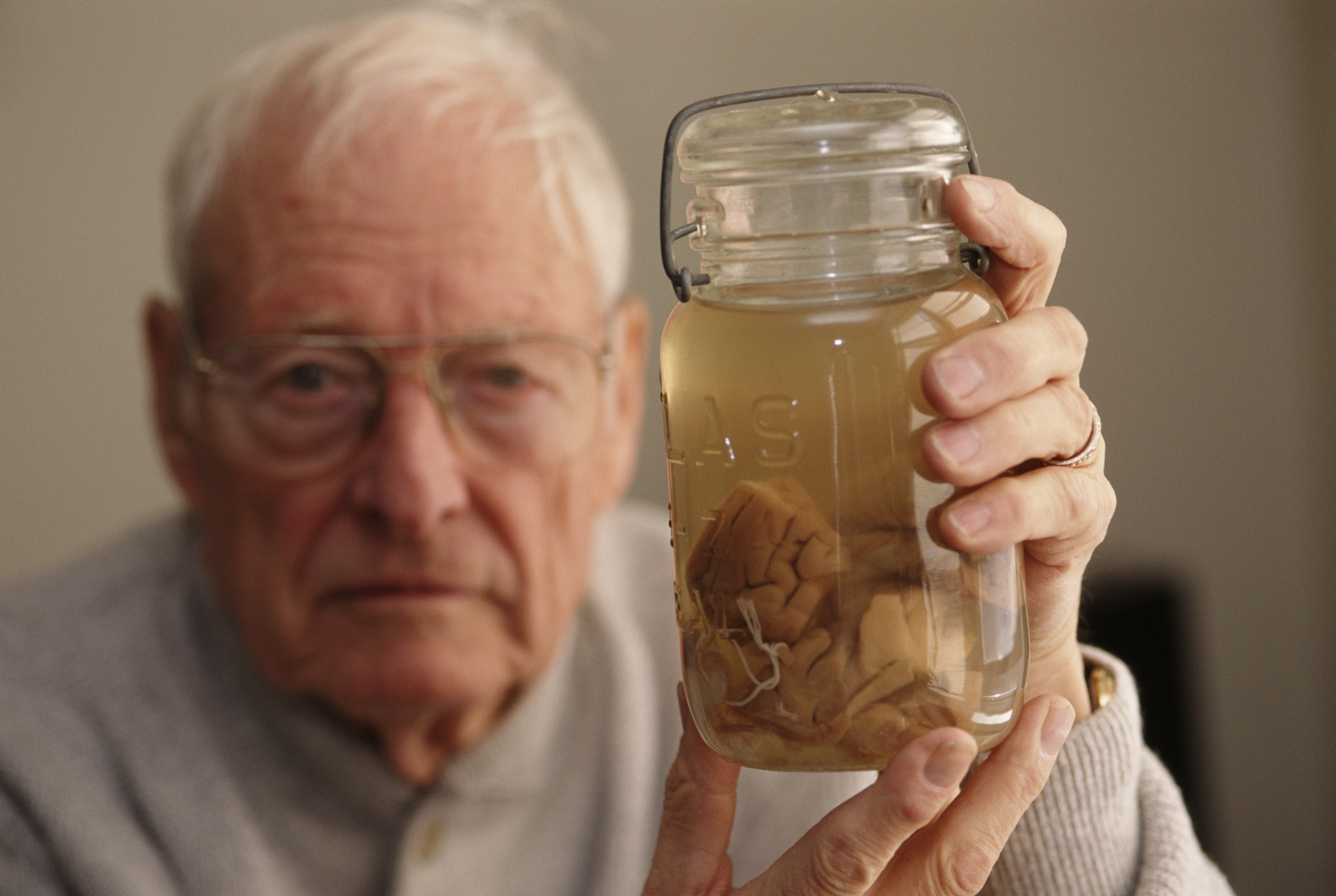Where is Einstein's brain?
Following his death in 1955, Albert Einstein's brain was removed, cut into 240 pieces and slowly distributed to scientists around the world. But where is Einstein's brain now?

On April 18, 1955, Albert Einstein died of an abdominal aneurysm at the age of 76, at the University Medical Center of Princeton in Plainsboro, New Jersey. Per his wishes, the legendary physicist's remains were cremated, and his ashes were scattered at an undisclosed location.
Except, that is, for his brain.
Immediately following Einstein's death, the man who oversaw the autopsy on the late physicist — a Princeton hospital pathologist named Thomas Stoltz Harvey — removed Einstein's brain from his body, cut it into 240 blocks and kept most of the preserved pieces in his personal possession for more than 40 years. Today, 170 of those blocks have been returned to the University Medical Center of Princeton, where they are kept under lock and key, according to the BBC. Another 46 hair-thin slices of Einstein's brain tissue are on display at the Mütter Museum of medical history in Philadelphia. Many of the other pieces are still missing.
How could so many pieces of arguably the most famous brain in history simply go missing? The answer goes back to a belief held by Harvey and others that there was something physically exceptional about Einstein's brain, and that proper scientific analysis of the brain could explain Einstein's genius.

After removing and cubing Einstein's brain in 1955, Harvey ordered some of the blocks to be cut into 12 sets of 200 ultra-thin slices of tissue, each one cut to no more than half the width of a human hair. (He also took photographs of the complete brain from various angles, before dissection).
Without permission from Einstein's family, Harvey mounted those brain slices onto slides and distributed them to an unknown number of researchers who — he hoped — could uncover the brain's hidden secrets. Harvey personally drove many of these samples across the U.S. and parts of Canada, while keeping the remaining bulk of Einstein's brain in a jar stashed in a cardboard box in his car, according to Science.
When his road trip with the genius' brain finally ran its course, Harvey moved the remaining brain blocks to a series of jars in his house. Though he continued to share samples with interested researchers, Harvey held onto the bulk of Einstein's brain until 1998, when he finally returned the remains to the University Medical Center of Princeton — 43 years after removing it from Einstein's head. Today, scientists are only allowed a look at the genius' brain if they provide the Medical Center with a very compelling proposal, according to the BBC.
Sign up for the Live Science daily newsletter now
Get the world’s most fascinating discoveries delivered straight to your inbox.
Did Harvey's endeavor to illuminate the secrets of Einstein's brain amount to anything? Somewhat. Several studies have been published about the photographs and samples that Harvey distributed, with the first appearing in 1985. These studies found minor differences in Einstein's brain structure compared with control groups of non-genius brains, including an extra groove in Einstein's frontal lobe — the part of the brain associated with working memory and planning — and a greater concentration of neurons in certain areas, possibly allowing for quicker information processing.
Many of the researchers to whom Harvey offered brain slices have since returned them. However, a portion of the slides that Harvey sent off have never been recovered. This somewhat complicates the question, "where is Einstein's brain?" While the bulk of its dissected pieces remain in Princeton, where the genius physicist died, an untold number of tissue samples have simply vanished. Einstein's brain could be anywhere.

Brandon is the space/physics editor at Live Science. His writing has appeared in The Washington Post, Reader's Digest, CBS.com, the Richard Dawkins Foundation website and other outlets. He holds a bachelor's degree in creative writing from the University of Arizona, with minors in journalism and media arts. He enjoys writing most about space, geoscience and the mysteries of the universe.










